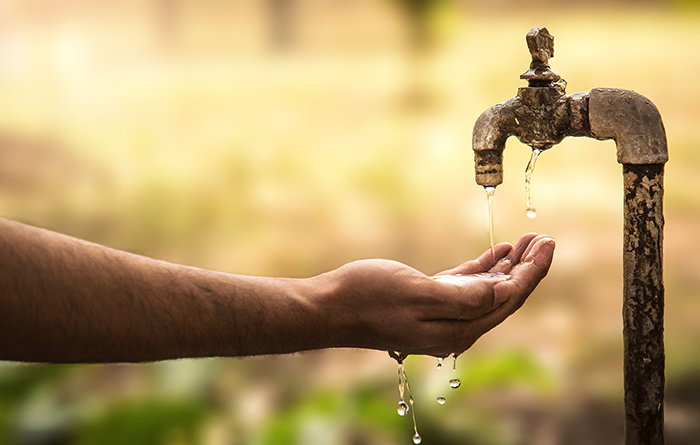インドで水の消費量を半分に削減
インドにあるアルファ・ラバルのセイン サービス センターでは、水の使用に重点を置くことで、現場での水の消費量を 49% 削減しました。これは、深刻な水ストレスを経験しているインドの一部です。このイニシアチブは、2030 年までに水ストレスのある地域の生産拠点ですべての水を再利用するというアルファ・ラバルの目標に貢献します。
更新日 2023-11-28This is in a part of India that experiences severe water stress. The initiative contributes towards Alfa Laval's target of reusing all water at production sites in areas with water stress by 2030. Water stress is a growing problem in India. More industries are settling down, and they all need water. This puts an emphasis on the need to optimize water consumption and benchmark with other service centres to close the gap between the actual performance and the ideal situation.

In 2020, the site in Mumbai topped the table of global service centres in terms of water use. Service centre managers Rakesh Deopurkar and Shivanand Hullur were keen to reverse this trend. With Rakesh as project lead, and with local managerial backing and central support, the team undertook a detailed process mapping of the facility – dividing the site into three specific zones and calculating total water consumption.
By fitting water meters at the administration building, workshop and grounds, the team was able to identify ways to significantly reduce the amount of water used, from a monthly average of 549 cubic metres in 2020, to 271 cubic metres in 2021 – smashing the annual 3 percent KPI target in the process.
Change in behaviour was a key factor
Encouraging a change in behaviour of all team members was also a key factor, says Rakesh:
"A 500-bar jet washer uses 17 litres of water per minute, so if you can get the same results with a 100-bar machine, you will save valuable water and electricity. We want to change the mindset so that we can sustain this water-saving and take it to the next level."
Future plans at the Thane Service Centre include real-time usage monitoring to spearhead continued water savings going forward.
"Water stress is a growing problem in India," says Shivanand. "More industries are coming here and they all need water. It is essential that water is not wasted and that water consumption is optimized. We need to monitor our use of water and benchmark with other service centres so we can continue to close the gap between our actual performance and the ideal situation. This is the only way we will be sustainable going forward."
Facts
49 percent water saving: 3.3 million litres annually at the Thane Service Center in Mumbai, India. With more than 20 million people, Mumbai withdraws 66.94 percent of its water. This makes the megacity severely water stressed. Also, the city is commonly considered to have the world’s biggest slums where millions of urban poor and landless people have no or little access to water and sanitation. Source: UN (2021)
What is water stress?
According to the UN, when a territory withdraws 25 percent or more of its renewable freshwater resources it is said to be water-stressed. Water scarcity can mean limited availability due to physical shortage, or problems with access to water due to the failure of institutions to ensure a regular supply or a lack of adequate infrastructure. Water scarcity already affects every continent.
